Bay leaves are a common ingredient in many cuisines around the world. They are often used to add flavor and aroma to soups, stews, and meat dishes. However, pet owners may wonder whether they can share this herb with their furry friends. The question is, can dogs eat bay leaves?
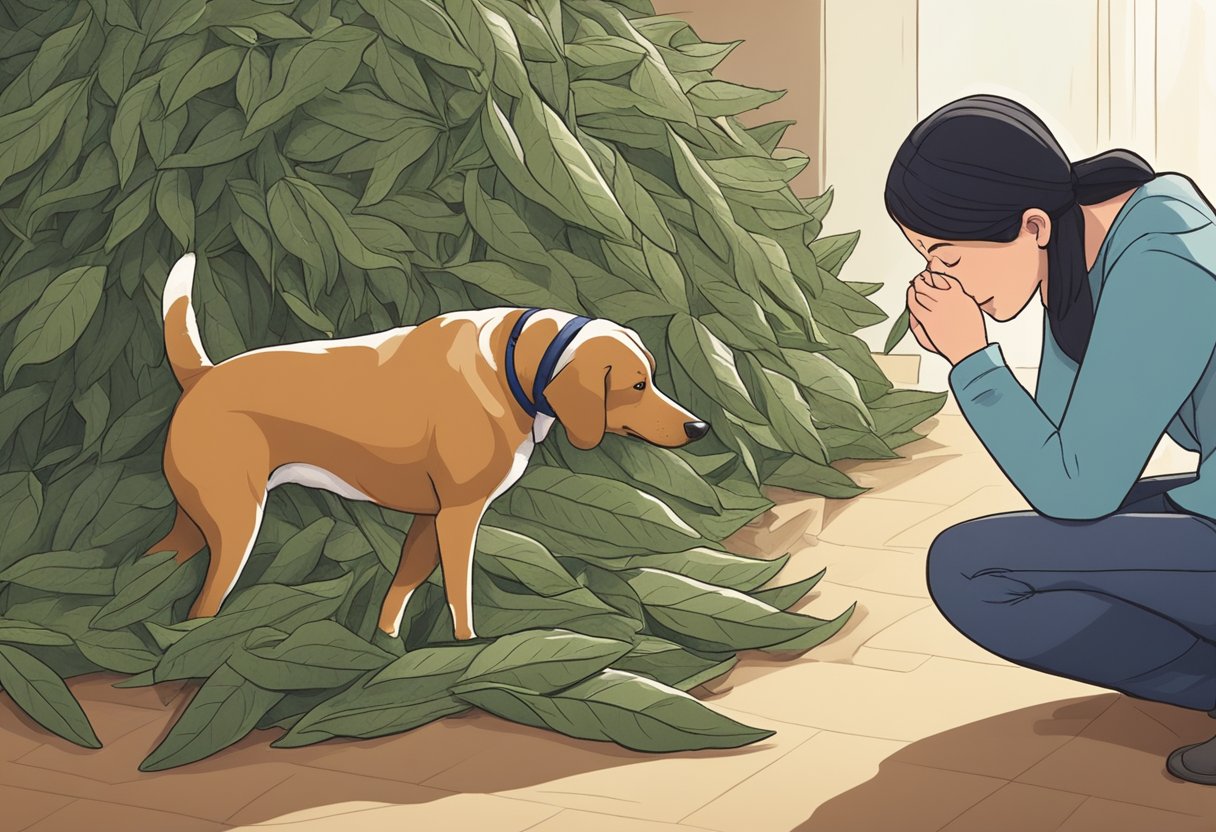
While bay leaves are safe for humans to consume in small amounts, they can be toxic to dogs. Bay leaves contain essential oils that are harmful to dogs, especially eugenol. When ingested, these oils can cause gastrointestinal distress, including vomiting and diarrhea. In some cases, they may also lead to more severe symptoms, such as seizures and respiratory distress. Therefore, it is best to keep bay leaves away from your furry friend's reach.
Understanding Bay Leaves
Botanical Profile of Bay Leaves
Bay leaves come from the sweet bay or bay laurel tree, which is native to the Mediterranean region. The scientific name of the tree is Laurus nobilis. The tree can grow up to 40 feet tall and has dark green, glossy leaves. The leaves are elliptical in shape and have a leathery texture. Bay leaves are usually harvested from the tree when they are fresh and then dried for later use.

Bay leaves are a popular herb used in cooking due to their distinctive aroma and flavor. They contain essential oils that give them a slightly sweet and spicy taste. The aroma of bay leaves is also quite strong and can add a pleasant smell to any dish.
Common Uses of Bay Leaves in Cooking
Bay leaves are a staple in Mediterranean cuisine and are used in a variety of dishes, including soups, stews, and sauces. They are often added to meat dishes such as beef, lamb, and chicken to enhance the flavor. Bay leaves are also commonly used in rice dishes and can be added to the water when cooking rice to give it a subtle flavor.
Fresh bay leaves can be difficult to find, so most people use dried bay leaves. Dried bay leaves are readily available in most grocery stores and can be stored for a long time. When using dried bay leaves, it is important to remember that they are more potent than fresh bay leaves, so only a small amount is needed to add flavor to a dish.
Bay leaves are a popular herb used in cooking due to their distinctive aroma and flavor. They are native to the Mediterranean region and are often used in Mediterranean cuisine. Bay leaves can be used in a variety of dishes, including soups, stews, and sauces, and are often added to meat dishes to enhance the flavor.
Potential Risks of Bay Leaves for Dogs
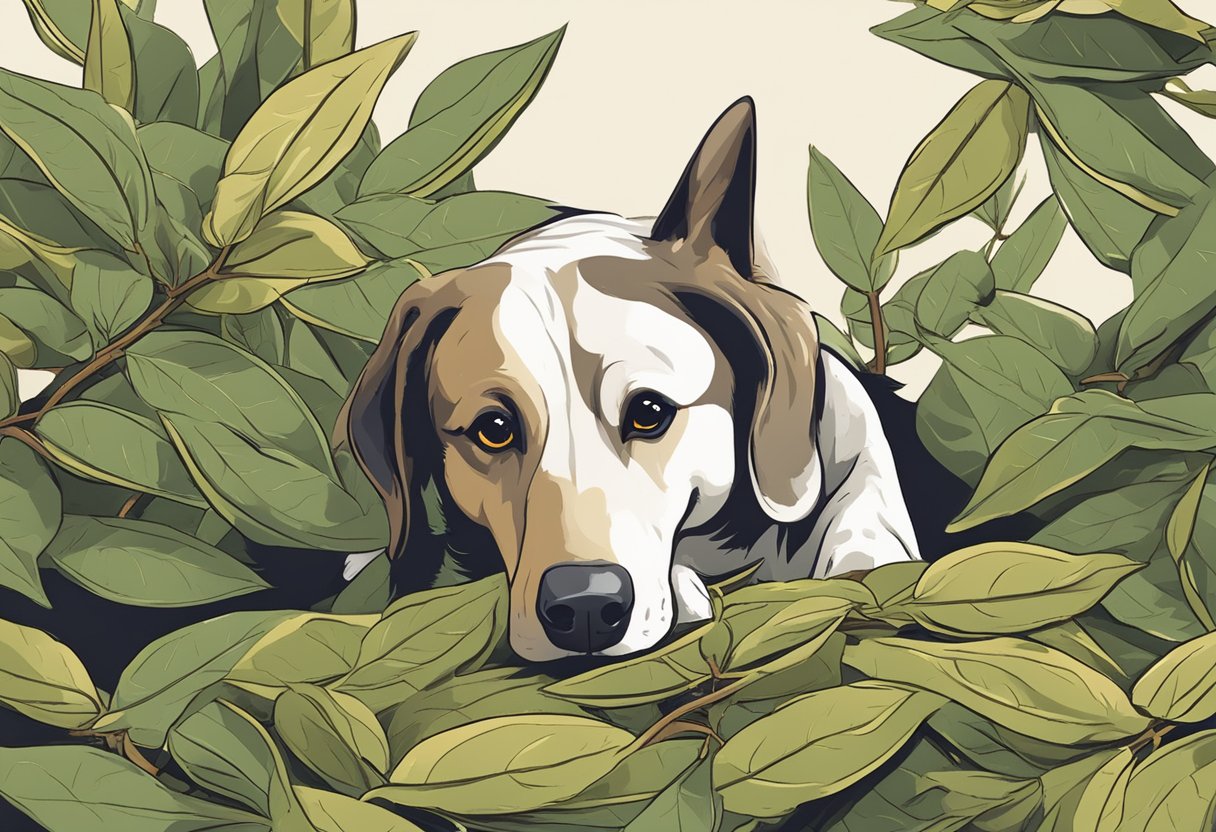
Toxicity of Bay Leaves
Bay leaves are toxic to dogs due to their chemical and physical properties. They contain numerous essential oils that are harmful to dogs, especially eugenol. According to Dogster, eugenol can cause digestive upset, excessive consumption can cause seizures, and large amounts can lead to liver damage.
Physical Hazards of Bay Leaves
Dried bay leaves are hard and have sharp edges, which can cause harm to dogs when ingested. If swallowed, these leaves have the potential to cut the dog's mouth, throat, and even their digestive tract. According to Hepper, if a dog has cuts in their mouth and throat, it may experience pain and abdominal pain. Additionally, if a dog ingests a large amount of bay leaves, it can cause dehydration, loss of appetite, and gastrointestinal distress.
The physical hazards of bay leaves also include the risk of obstruction and choking. If a dog ingests a large amount of bay leaves, it can cause an obstruction in their digestive tract, which can lead to health problems. Moreover, the sharp edges of the bay leaves can cause choking hazards, especially in smaller dogs.
Bay leaves are harmful to dogs, and pet owners should avoid feeding them to their dogs. If a dog ingests bay leaves, it can cause severe health problems, including liver and kidney damage. Pet owners should be aware of the symptoms of bay leaf toxicity, which include vomiting, diarrhea, and loss of appetite, and contact a veterinarian immediately if they suspect their dog has ingested bay leaves.
Chemical Compounds in Bay Leaves
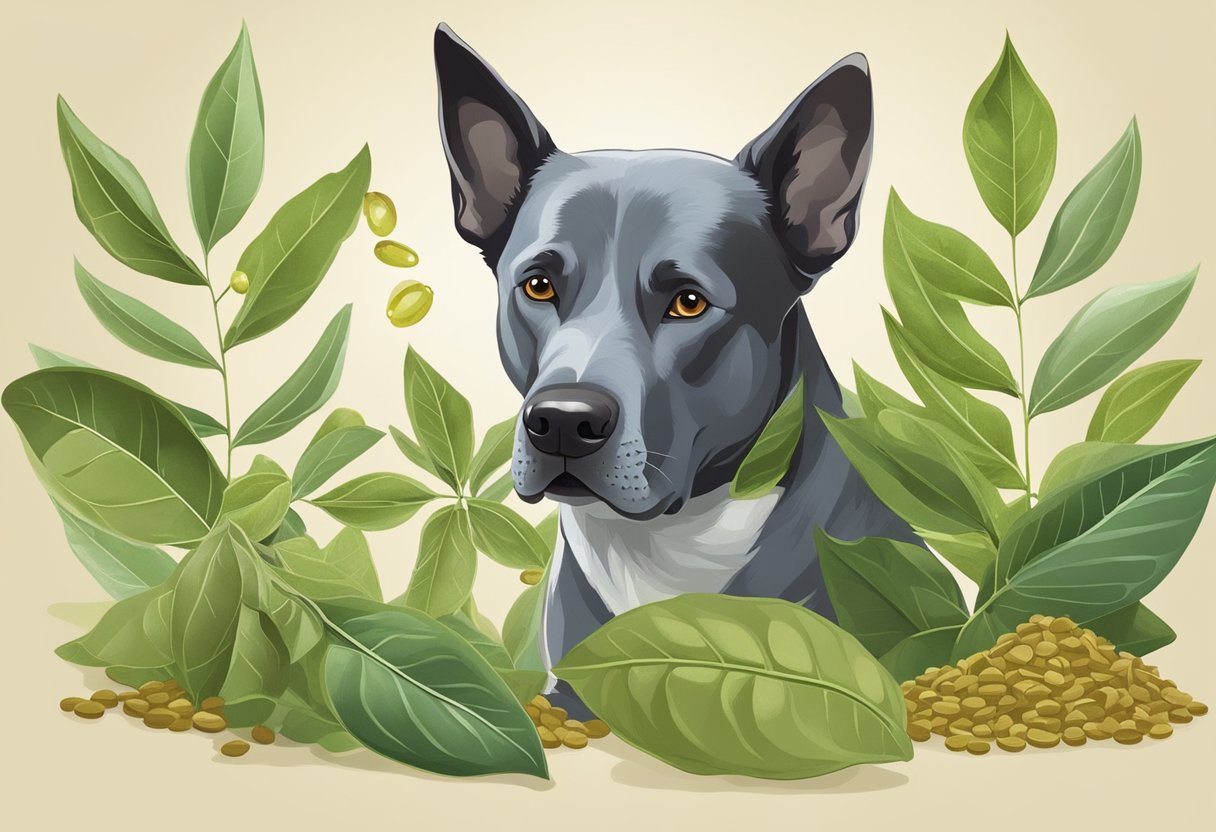
Essential Oils and Their Effects
Bay leaves contain numerous essential oils that are toxic to dogs, especially eugenol. According to Dogster, eugenol is a chemical compound found in bay leaves that can cause gastrointestinal upset, liver damage, and even death in dogs. Dogs cannot break down essential oils like humans can, making them more susceptible to the toxic effects of bay leaves.
In addition to eugenol, bay leaves also contain eucalyptol, which can cause gastrointestinal distress in dogs if consumed in large quantities. Dogs may experience vomiting, diarrhea, and loss of appetite if they ingest bay leaves.
Specific Chemicals of Concern
Bay leaves contain several other chemical compounds that can be harmful to dogs. For example, bay leaves contain terpenes, which are organic compounds that can cause skin irritation, respiratory problems, and other health issues in dogs. Bay leaves also contain sesquiterpenes, which are a type of terpene that can cause liver damage and other health problems if ingested in large quantities.
Another chemical of concern in bay leaves is methyleugenol, which is a carcinogenic compound that can cause cancer in dogs if consumed in large quantities. While small amounts of methyleugenol are not harmful, dogs should not be allowed to consume large quantities of bay leaves.
Overall, bay leaves are dangerous for dogs due to their chemical and physical properties. It is important for dog owners to keep bay leaves and other toxic foods out of reach of their pets to prevent accidental ingestion.
Clinical Symptoms and Veterinary Care
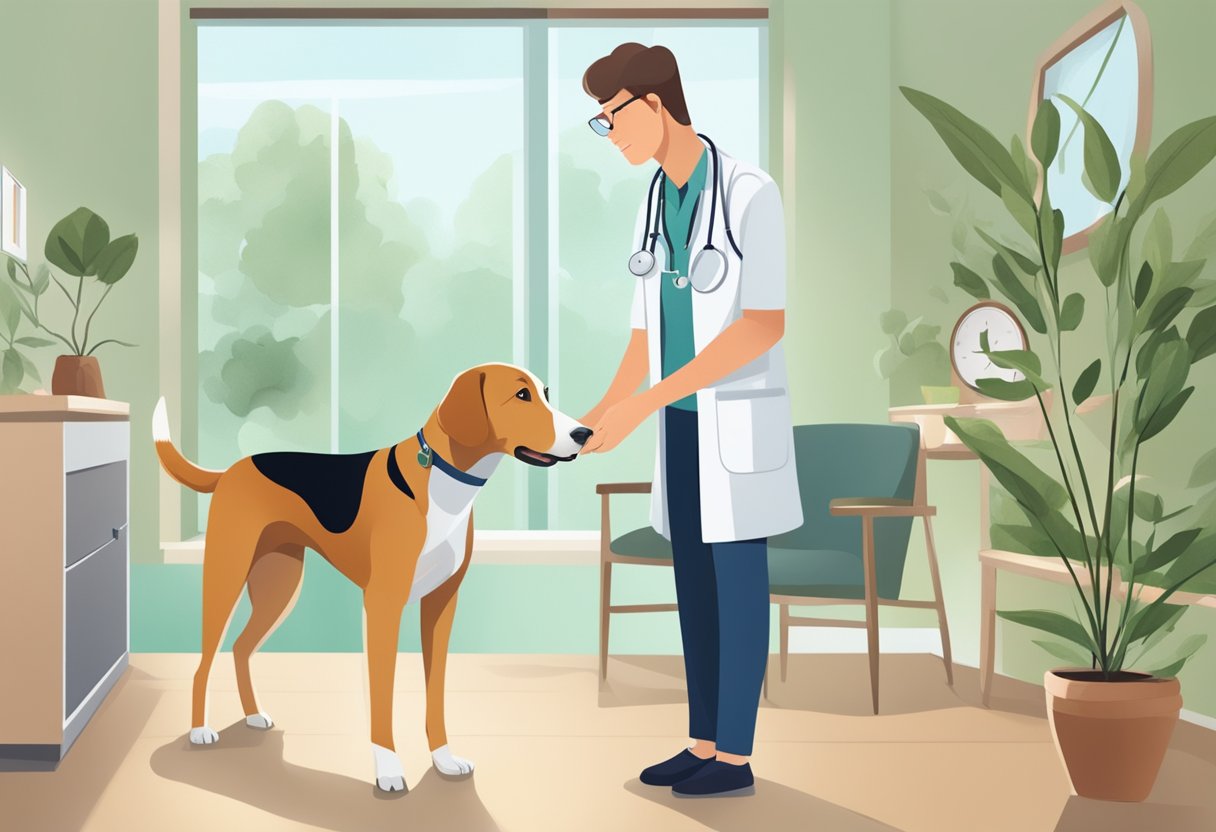
Recognizing Adverse Symptoms
If a dog has ingested bay leaves, they may exhibit a range of symptoms. These symptoms may include vomiting, diarrhea, and gastrointestinal upset. In some cases, the essential oils found in bay leaves can trigger neurotic symptoms, such as disorientation, coma, seizures, and death.
Additionally, dogs may experience pain and discomfort due to cuts in their mouth, throat, and digestive tract caused by the sharp edges of dried bay leaves. Symptoms of pain may include whining, whimpering, and reluctance to eat or drink.
Other symptoms of bay leaf toxicity in dogs may include lack of coordination and motor dysfunction, particularly in the hind legs. Dogs may also exhibit signs of allergies such as itching, hives, and swelling.
When to Seek Veterinary Help
If a dog exhibits any adverse symptoms after ingesting bay leaves, it is important to seek veterinary care immediately. A veterinarian can help diagnose the extent of the toxicity and provide appropriate medical care to alleviate symptoms.
In severe cases, hospitalization may be required to provide supportive care and monitor the dog's condition. This may involve administering intravenous fluids, medications to control vomiting and diarrhea, and pain management.
While bay leaves are a common ingredient in human cuisine, they can be toxic to dogs. If a dog ingests bay leaves, it is important to monitor them closely for adverse symptoms and seek veterinary care immediately if any symptoms are observed.
Safe Dietary Practices for Dogs
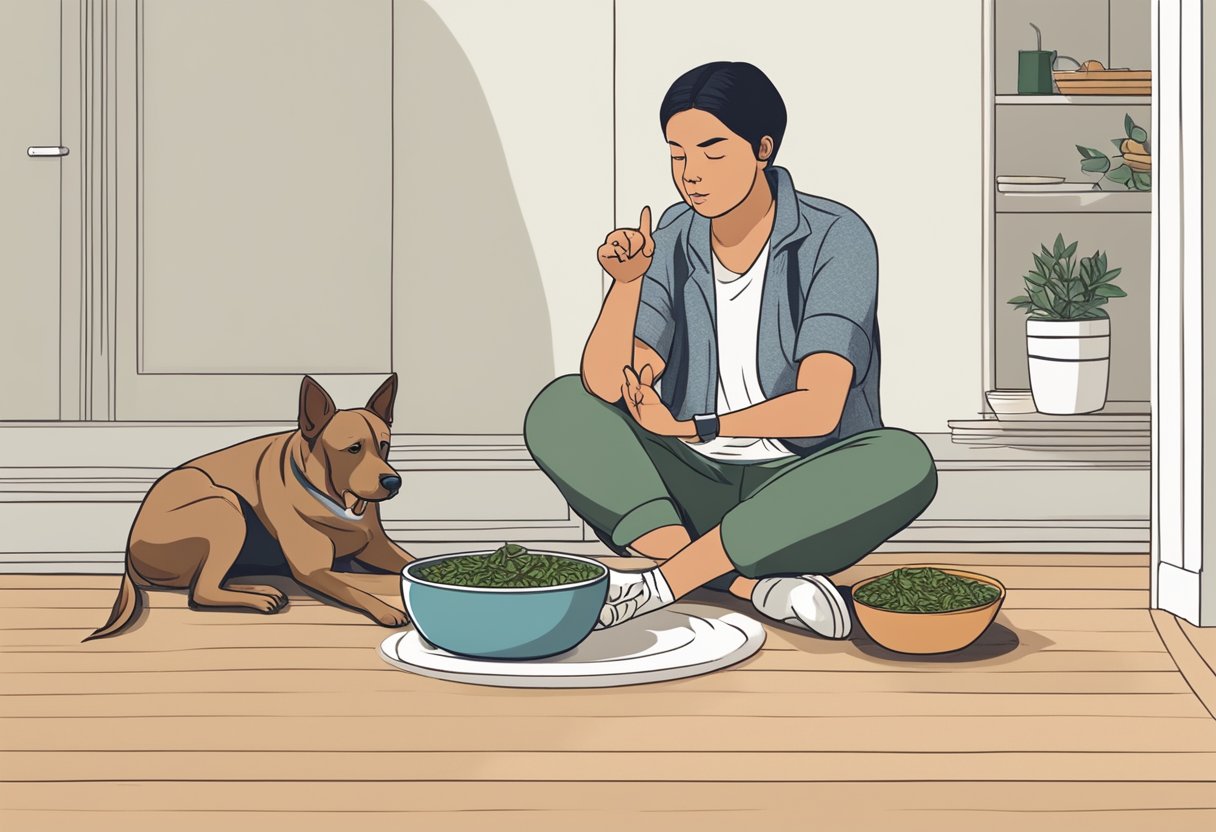
As a responsible pet owner, it's important to ensure that your dog's diet is safe and healthy. Here are some tips to help you make sure your furry friend stays healthy and happy.
Appropriate Treats and Foods
When it comes to dog food and treats, it's important to choose products that are specifically designed for dogs. Human food can be dangerous for dogs, and some ingredients can be toxic. For example, bay leaves contain essential oils that are toxic to dogs, and can cause digestive upset, vomiting, and even seizures.
It's also important to choose treats that are appropriate for your dog's size and age. Small dogs can choke on large treats, while older dogs may have trouble chewing hard treats. Always supervise your dog when giving treats, and make sure they don't eat too much at once.
Herbs and Spices That Are Safe for Dogs
While some herbs and spices can be harmful to dogs, there are many that are safe and even beneficial. Parsley, for example, can freshen your dog's breath and provide a natural source of vitamin C. Rosemary has antioxidant properties and can help boost your dog's immune system. Ginger can help soothe upset stomachs, while thyme has antibacterial properties.
When using herbs and spices in your dog's diet, it's important to use them in moderation. Too much of any herb or spice can be harmful, and some can even be toxic in large quantities. Always consult with your veterinarian before adding any new herbs or spices to your dog's diet.
Safer Alternatives
If you're looking for a safer alternative to bay leaves, there are many herbs and spices that are safe for dogs to eat. Some good options include basil, oregano, and sage. These herbs are safe and can provide a variety of health benefits for your furry friend.
In addition to herbs and spices, there are many other safe and healthy foods that you can add to your dog's diet. Some good options include lean meats, fruits and vegetables, and whole grains. Always consult with your veterinarian before making any changes to your dog's diet, and make sure that any new foods are introduced slowly and in moderation.
By following these safe dietary practices, you can help ensure that your dog stays healthy and happy for years to come.
Alternatives to Bay Leaves
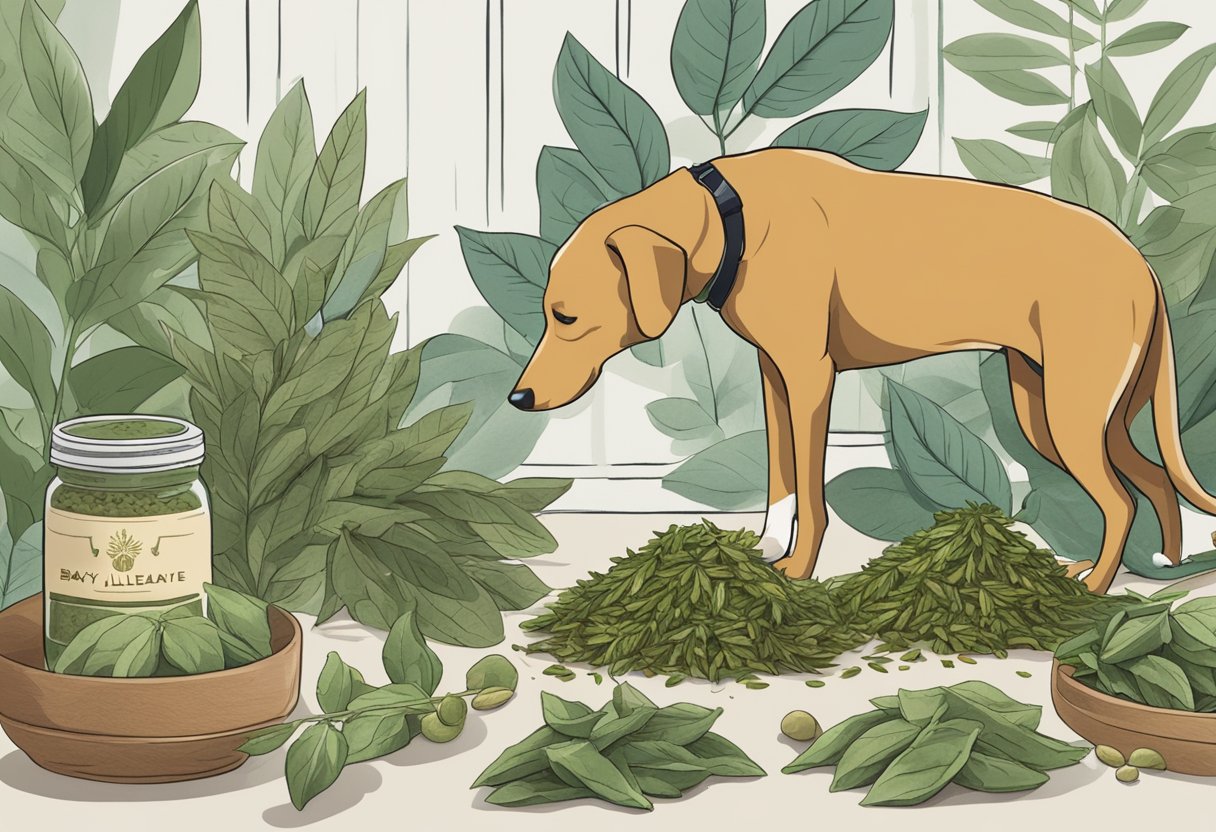
Herbal Alternatives
While bay leaves are not recommended for dogs, there are many other herbs that can be used to add flavor and fragrance to your dog's meals. Some of the safer alternatives to bay leaves include rosemary, parsley, and thyme. These herbs are not only safe for dogs but also have many health benefits.
Rosemary, for example, is a natural antioxidant that can help boost your dog's immune system. Parsley is rich in vitamins and minerals and can help freshen your dog's breath. Thyme is also a natural antioxidant and has antibacterial properties that can help keep your dog healthy.

Creating Flavorful Dog-Friendly Meals
When cooking for your dog, it's important to use ingredients that are safe and healthy. In addition to herbs, there are many other ingredients that can be used to create flavorful dog-friendly meals. Ginger, for example, is a natural anti-inflammatory that can help soothe your dog's stomach. Sweet potatoes are a great source of fiber and antioxidants and can be used as a healthy alternative to rice or pasta. Chicken and fish are also great sources of protein that can be used in a variety of recipes.
When using herbs and other ingredients in your dog's meals, it's important to use them in moderation. Too much of any ingredient can be harmful to your dog's health. It's also important to avoid using any ingredients that are toxic to dogs, such as onions, garlic, and chocolate.
While bay leaves are not safe for dogs, there are many other herbs and ingredients that can be used to create flavorful and healthy meals. By using safe and healthy ingredients in moderation, you can create meals that your dog will love and that will keep them healthy and happy.
Preventive Measures and Responsible Pet Ownership
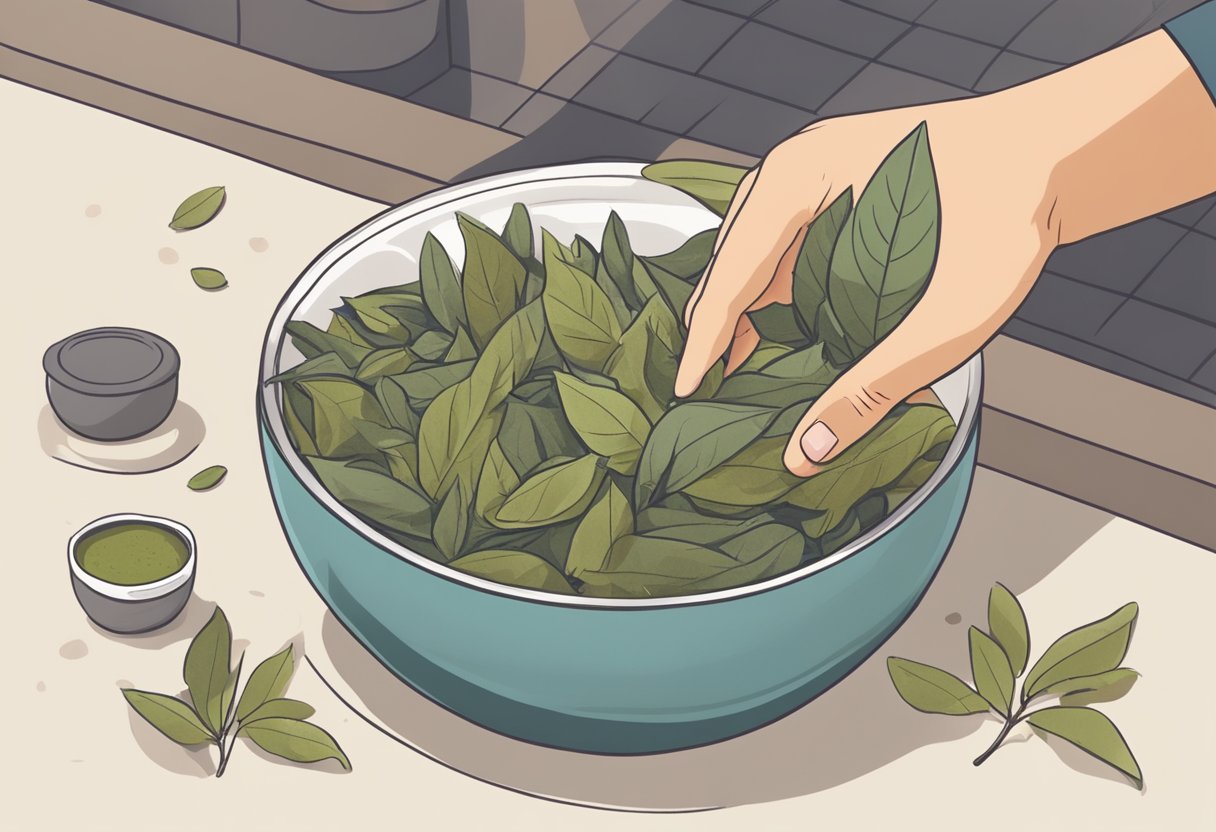
Avoiding Accidental Ingestion
Preventing accidental ingestion of bay leaves is crucial to ensure the safety of dogs. Pet owners should keep bay leaves, as well as other toxic plants, out of reach of their pets. It is also important to supervise dogs when they are outside to prevent them from ingesting any plants that may be toxic.
If a pet owner suspects that their dog has ingested bay leaves, they should contact their veterinarian immediately. Symptoms of ingestion may include vomiting, diarrhea, and abdominal pain. In severe cases, ingestion of bay leaves can cause obstruction or motor dysfunction.
Educating Pet Owners on Plant Toxicity
Responsible pet ownership includes being knowledgeable about the plants and foods that are toxic to dogs. Pet owners should educate themselves on the potential dangers of bay leaves and other toxic plants.
While bay leaves are commonly used in cooking, they should never be given to dogs as a treat or added to their food. Flea and tick products that contain bay laurel or bay laurel oil should also be avoided. These products can be toxic to dogs and cause digestive issues or even neurological problems.
In summary, pet owners should take precautions to prevent accidental ingestion of bay leaves and other toxic plants. By being responsible and knowledgeable, pet owners can keep their pets safe from choking, digestive issues, and other potential health hazards.
Conclusion
Bay leaves, while beneficial in human cuisine, pose significant risks to dogs due to their toxic essential oils and sharp edges, which can cause gastrointestinal distress and more severe health issues. Responsible pet ownership involves keeping bay leaves and other toxic substances out of dogs' reach and using safer, dog-friendly herbs like rosemary, parsley, and thyme.
If accidental ingestion occurs, immediate veterinary care is crucial. By being informed about plant toxicity and practicing safe dietary habits, pet owners can ensure the well-being and health of their furry companions, preventing potential hazards and promoting a safe living environment.

